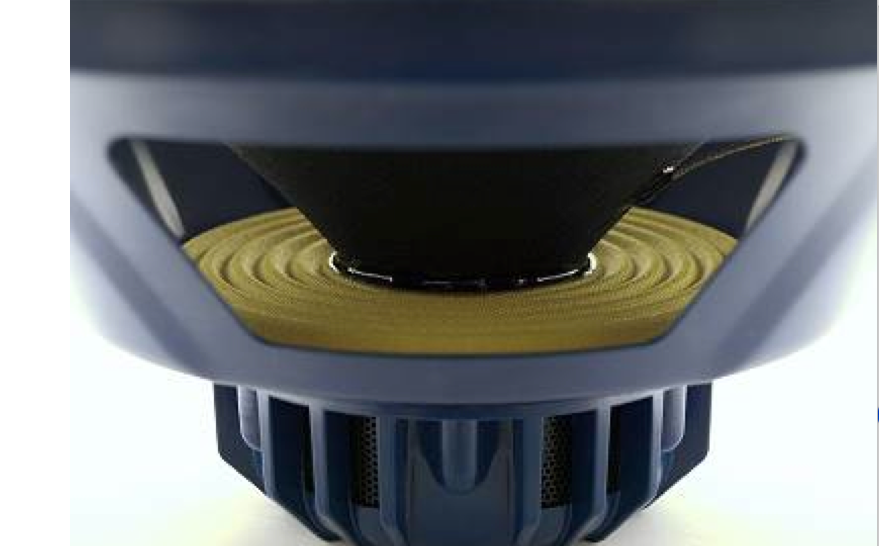It is a classic looking new neodymium speaker its got vents in the magnet assembly 400W music power. At 100dB 60-400Hz K3< 0,3% recommended to use in a three way with cutoff below 500Hz for best results.


Last edited:
Tuning the Onken ..
I am curious too .. anybody physically tuning with audio measurements or ..? Could you tweak / add internal mass to decrease internal volume to tune or add resistive material to the ports or is the relationship of volume to port resistance just too complicated and requires complete recalc .. ?
Good question! Sure hope someone here has an answer.
I am curious too .. anybody physically tuning with audio measurements or ..? Could you tweak / add internal mass to decrease internal volume to tune or add resistive material to the ports or is the relationship of volume to port resistance just too complicated and requires complete recalc .. ?

What, general tuning? It's just a BR, one directly related to the old Jensen Ultraflex & Thuras's original box, so it can be treated like any other box of this type. You can attenutate peaking at / around Fb via damping in the box. Stapling layers of damping across the rear of the driver is an alternative. You can also damp the vents as required -this can be useful anyway at attenuating the harmonic resonances of the vents themselves, which some find objectionable. Measure away if you feel inclined, or use the old click-test, tune by ear, whatever you like.
Last edited:
Is it like a BR where i tune on impedance peaks, or is it something clever?
Correct, done 'by the book', the impedance peaks will be of equal amplitude.
GM
Sorry if I missed it but did anyone try the AE TD15M in an Onken enclosure?
Haven't seen one, but its published specs looks good for a n= 6.34 alignment at the 0.75*Sd vent area minimum.
GM
The "onken-calculators" are often quite wrong...
The Onken box is really a slightly underdamped bass reflex with Vb = 6.4 * VAS * Qt^2 and Fb = 0.4 * Fs/Qt, and two rows of large rectangular vents (Sv_tot ~ Sd) on either side.
TS parameters for the classic Altec 414-8B and 416-8B are as follows:
414-8B) Sd = 556 cm2, Qts = 0.25 (but the final Qt depends on the added series resistance Rg), Fs = 29 Hz, Mms = 36 g, VAS = 380 L
416-8B) Sd = 835 cm2, Qts = 0.25 (but Qt again depends on Rg), Fs = 25 Hz, Mms = 61 g, VAS = 650 L
Assuming Rg = 0 (i.e. actively driven by a SS amp), you get 155 L / 45 Hz for the Petite Onken, and assuming Rg = 0.2 (e.g. passively driven by a SS amp with a low-loss series inductor in the X-over), you get 270 L / 39 Hz for the classic Onken.
Both are perfect matches with the box drawings.
For other Woofers and/or values of Rg, if you want to achieve the intended "Onken" tuning, it's better to re-design a new box from scratch than force the use of a poorly-matched "classic" design.
Calculating the correct vent size isn't quite as straightforward as usual, because of their peculiar placement and mutual interactions, and this is where most "onken-calculators" typically go (very) wrong.
Vent length has to take into account the shape of the vent (the more rectangular, the shorter), the placement flush with one side wall, and the average distance between the two sidewalls (the closer the walls, the shorter).
The formulas for the three correction factors are quite complex and involuted, so I cannot simply post them here. Also, they are inevitably still affected by a margin of error... so, really, optimizing a new Onken box ends up requiring lengthy (and possibly costly) fine tuning, by starting with longer vents and then shortening them (to raise Fb) or partially blocking some of them (to lower Fb). If this isn't enough to achive the intended Fb, there is no other option than scrapping the test box and starting anew.
Or, of course, just going for a more "normal" bass reflex box with a couple of largish round vents and the same Vb & Fb 😉
Marco
Old, old thread. But I'm coming halfway back from dipole speakers
I tuned the vents to get my best overall performance with a bigger than recommended 8.6 ft3 vented box, for a 15 imch Celestion woofer.
Then actively crossed the 511B/Fane horn , woofer and outboard dual 18inch open baffle push pull sub, 4th order.
Breathtakingly better in every way to my Revelator/Electrostatic hybrid satellites with Dayton Audio RS265HF4 Double dual bass bins in U Frames.
Taking below 80 hertz bass out of the cabinets may vastly reduce the large paper woofer from being modulated with deep bass backwaves pounding against it. I have no other idea why the clarity jumped so much higher in the midwoofer range, 80-2000 hertz.
The jump sounds similar to an isobaric experiment with Dynavox 6.5 inch woofers, presumably because internal waves never traverse the air piston between those two woofers.
Amyone else try this with their Onkens?
- Status
- Not open for further replies.
- Home
- Loudspeakers
- Multi-Way
- Reviving the Onken